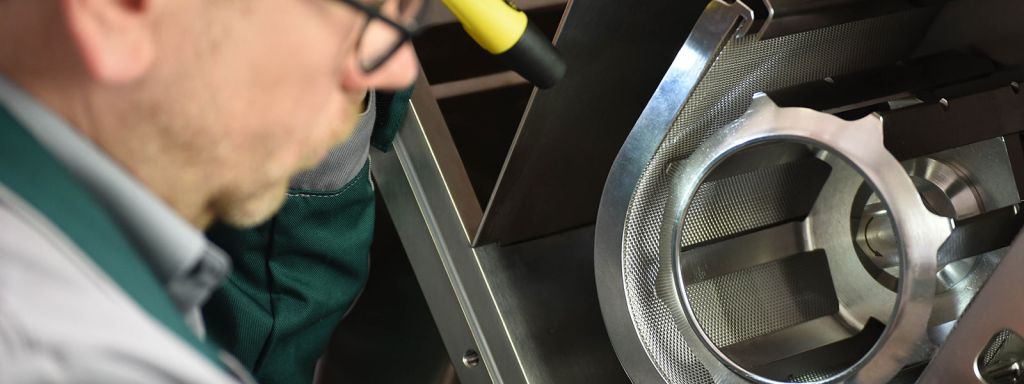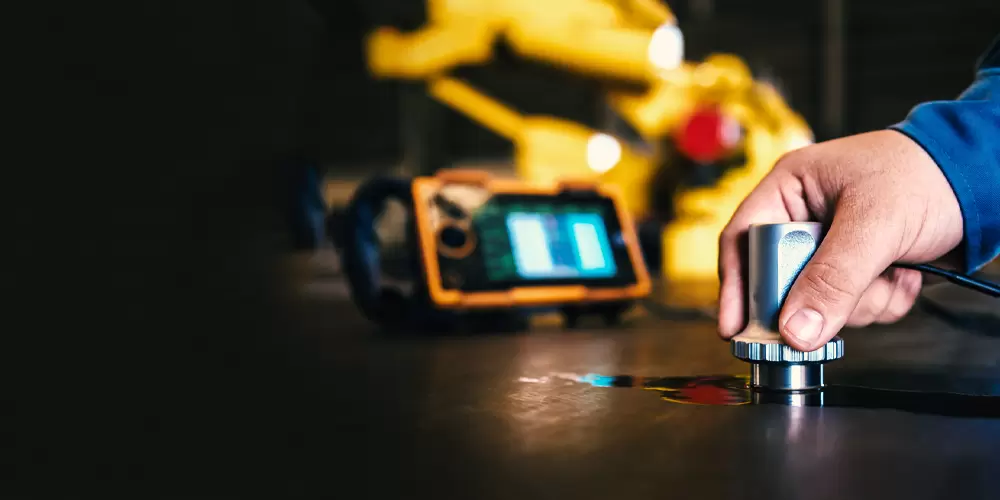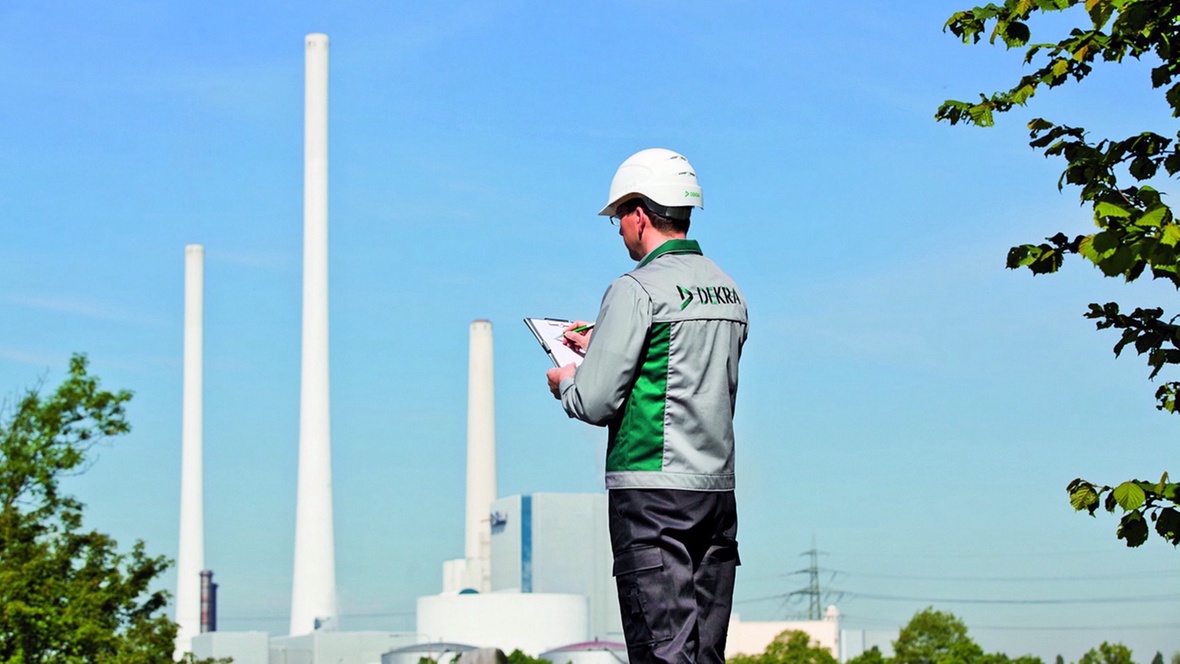Services
Inspection
DEKRA offers notified body services for pressure equipment, helping manufacturers fulfill mandatory assessment and inspection requirements within the directives for pressure equipment (PED), simple pressure vessels (SPVD), and transportable pressure equipment (TPED). We also provide conformity assessment procedures and inspections for lifts, machinery, and equipment as a notified body according to European Directives
We are accredited to conduct inspections of pressurized equipment, and they offer a range of periodical inspection services for pressure equipment and boilers. They are recognized as a 3rd party inspection body in many countries, providing services as required by national or regional regulations. We also provide inspection services for lifts, machinery, and hoisting equipment.
- Fire Protection: We provide expert technical advisory services to navigate fire safety regulations and enhance safety measures.
- Explosion Protection: We offer consulting on ATEX/NFPA and other regulatory topics, assess explosion hazards and workplace risk, and conduct inspections for safe processes.
- Electrical Inspection: DEKRA provides professional inspection services for electrical and building safety, including all aspects of electrical inspection.
DEKRA Industrial offers vendor inspection and expediting services to ensure the quality of suppliers and safe manufacturing within project timeframes. We support worldwide projects in industries such as oil and gas, chemical and petrochemical, energy, pulp and paper, providing on-site examinations, vendor qualification assessments, and expediting services.
DEKRA Industrial offers a range of services related to welding and construction supervision. These include:
- Personal Certification: Ensuring welders are qualified.
- Procedure Qualification: Accreditation for welding procedures.
- Materials Engineering: Analysis and selection of materials.
- Quality Assurance: Overseeing the quality of welding work.
- Process Optimization: Improving welding processes.
Services
Destructive-Testing
(Lab Services)
Whether it is for your material characterization or weld testing needs, metals or other materials. DEKRA provides accredited testing to most relevant industry standards both ISO, ASTM and ASME.
- Tensile testing of materials
- Impact testing of materials
- Bend testing of materials
- Hardness testing of materials
- Tensile testing of welds
- Impact testing of welds
- Bend testing of welds
- Hardness testing of welds
- Fracture testing of welds
- Fatigue testing
- Compression testing
- Other mechanical testing of materials
Dekra Industrial offers Surface Roughness and Specific Dimensional Measurement services tailored to customer needs. They have a variety of tools for measurements on images and physical components, and skilled technicians are available to meet specific measurement or verification requirements.
Dekra Industrial offers metallographic testing services that utilize both optical microscopes and scanning electron microscopes (SEM). Optical microscopes at Dekra can magnify up to 1000 times, while SEMs provide even higher magnifications and are complemented by microanalytical determination of surfaces using EDS (Energy Dispersive X-ray Spectroscopy)
We offer a range of material analysis services, including failure investigations, material and reliability testing, and non-destructive testing. Services include radiographic, ultrasonic, magnetic particle, and dye penetrant inspection, among others. They help identify causes of damage and prevent future downtimes.
DEKRA Industrial offers a range of corrosion analysis services, including online monitoring of corrosion and creep to prevent downtime and save costs. They provide remote and online solutions with customer-specific digital solutions. Our laboratories are accredited according to ISO 17025, and they offer both standardized and customized corrosion testing services under ambient and high-temperature, high-pressure conditions.
DEKRA offers Failure Investigations and Analyses services to identify causes of damage to vehicle components, machines, or structures. We use comprehensive material analyses to prevent future production downtimes and increase safety. This analysis helps maintain asset integrity and provides clarity in liability issues with state-of-the-art testing technologies
We offer a range of Asset Integrity Services to manage assets safely and efficiently, complying with regulations. Services include material testing, inspection processes, equipment, infrastructures, and non-destructive testing (NDT)
Services
Non Destructive Testing
Dekra Industrial offers Radiographic Inspection services utilizing both X-rays and gamma rays. They have a variety of isotope sources available for different steel thicknesses:
- Se75 Isotope: for steel 5 to 20mm
- Ir192 Isotope: for steel 10 to 50mm
- Co60 Isotope: for steel 25 to 200mm
DEKRA offers ultrasonic testing services for detecting and sizing in-service and manufacturing defects. They use advanced techniques like time of flight diffraction (TOFD), pulse echo, and phased array (PA) for various inspections including weld seam, sheet metal, and wall thickness measurements
Dekra Industrial offers a range of Non-Destructive Testing (NDT) services, including Magnetic Particle Inspection and Dye Penetrant Inspection. These methods are used to detect surface-breaking flaws such as cracks, laps, porosity, and make them visible for evaluation.
DEKRA Industrial offers on-site testing services, including mobile hardness testing, which can be performed via their mobile metallurgy laboratories. This service helps understand material property changes and prevents unplanned failures of components or plants. It can save time and costs in critical projects.
DEKRA Industrial offers comprehensive material analyses to identify causes of damage, prevent production downtimes, and increase user safety. They conduct failure investigations and chemical analysis of materials using both stationary and mobile spectral analysis equipment.
These inspections are part of their comprehensive material testing and condition monitoring services to ensure the integrity and safety of equipment and processes.
Dekra Industrial offers a range of non-destructive testing services for concrete, including condition assessments and investigations of potential deficiencies.
Third-Party Inspections of Pressure Equipment: DEKRA, as an internationally accredited organization, has unparalleled experience in inspection. We have a worldwide network of advanced testing facilities. Our engineers can carry out necessary third-party pressure equipment inspections as required by national or regional government regulations
Certification of Pressure Equipment: DEKRA provides notified body services related to pressure equipment. We help manufacturers fulfill mandatory assessment and inspection requirements within the directives for pressure equipment (PED), simple pressure vessels (SPVD), and transportable pressure equipment (TPED)
Services
Advanced & NDT Services
Phased Array Ultrasonic Testing (PAUT) is an advanced method of ultrasonic testing (UT) widely used for non-destructive testing (NDT) in various industrial sectors, including construction, pipelines, and power generation. This technique detects discontinuities such as cracks or flaws, allowing for the assessment of component quality12. Here are some key features of PAUT:
Real-time Imaging: PAUT provides real-time imaging through advanced software optimization and parallelization of the Total Focusing Method (TFM) algorithm. It allows for weld geometry inspection with B-scan, C-scan, and D-scan displays.
Anisotropic CFRP Material Inspection: PAUT compensates for velocity variations, making it suitable for inspecting anisotropic Carbon Fiber Reinforced Polymer (CFRP) materials.
Calibration of Inspection Sensitivity: PAUT ensures a uniform amplitude response throughout the region of interest, allowing for accurate sensitivity calibration.
Hybrid Phased Array/TFM Technique: This technique combines phased array and TFM for rapid inspection (100+ frames per second) using large arrays, especially for thick-section components.
Micro Phased Array: The micro phased array scanner holds two probes to inspect pipes with outer diameters ranging from 1 inch to 4 inches. Its slim design allows inspection in limited access areas where minimal clearance is required. Adjacent obstructions can be as close as 18 mm. This type of phased array can be used instead of radiography in tight-scheduled projects
Time of Flight Diffraction (TOFD) is a widely used non-destructive testing (NDT) method for detecting flaws in welds.
Principle of TOFD:
- Unlike traditional ultrasonic testing (UT) methods that rely on the reflectivity of flaws, TOFD uses the diffracted sound waves originating from the flaw tips.
- This means that TOFD can detect flaws irrespective of their type or orientation.
- In a TOFD system, a pair of probes sits on opposite sides of a weld, allowing accurate flaw detection and sizing
Computerized Radiography (CR):
- CR is an advanced radiographic testing method used to inspect materials for defects. Instead of using traditional film, CR employs digital detectors to capture and store test images.
- These digital detectors, in combination with specialized software, allow for efficient defect detection in welds, parent materials, and critical equipment.
- CR is particularly useful for assessing potentially dangerous structures, pipelines, and industrial equipment.
- DEKRA’s ART specialists utilize various types of digital detectors and x-ray tubes to perform CR effectively
DEKRA, a specialized provider of industrial testing services, performs Advanced Eddy Current Testing on various materials, including surface and tubing inspections. Here are some key points about Eddy Current Testing:
- Applications:
- Surface Inspections: Eddy Current Testing is used to detect defects in the surface of materials. It can identify tight cracks and other flaws, making it highly sensitive.
- Tubing Inspections: This method is also applied to inspect tubing, including both ferromagnetic and non-ferromagnetic materials. It can detect internal and external defects in tubes.
- Sorting Materials: Eddy Current Testing helps sort materials based on their alloy and hardness.
IRIS Certification® (ISO/TS 22163):
- The IRIS Certification® scheme is designed for the railway industry and comprises the ISO/TS 22163:2017 standard along with the IRIS Certification® Conformity assessment:2020.
- ISO/TS 22163 adopts the structure of the ISO 9001:2015 quality management standard and extends it to include requirements specifically for the railway industry.
- Companies in the rail vehicle industry, including infrastructure technology suppliers, can benefit from this certification.
- The focus is on processes rather than procedures, emphasizing risk-based thinking and continuous improvement.
- Key performance indicators (KPIs) are monitored and evaluated regularly to ensure process and organizational enhancement.
- Infrared thermography involves obtaining an image of the heat distribution over the surface of a test object.
- It works by capturing thermal energy emitted from the object and converting it to apparent temperature.
- The result is displayed as an infrared image.
- Importantly, infrared thermography allows you to capture these thermal images without making direct contact with the equipment
- CUPS refers to Corrosion Under Pipe Supports. It occurs when corrosion develops at the interface between a pipe and its support structure.
- The two most common types of pipe supports associated with CUPS are saddle clamps and beam supports.
- These supports create conditions conducive to corrosion due to:
- Crevice formation: Small gaps or crevices between the pipe and support.
- Water trapping: Water gets trapped in these crevices, leading to prolonged contact with the pipe surface.
- Restricted access: Maintenance and inspection become challenging due to limited access at the support locations
- EMAT induces ultrasonic waves into the test object using two interacting magnetic fields.
- Unlike conventional ultrasonic testing, which relies on direct contact between the transducer and the material, EMAT generates sound waves without physical coupling.
- The interaction of magnetic fields creates mechanical vibrations in the material, producing ultrasonic waves that propagate through it.
Services
Advanced & NDT Services (Continued)
- This process uses standardized test methods to reveal and determine visual characteristics of a material at both the macro- and micro-scale.
- A dedicated expert can draw conclusions about the current state of a material and assess its remaining lifetime.
- Metallurgical examinations can be performed on-site by replicating the surface of interest for later metallographic studies in the laboratory.
- Digital Twins: Sites are displayed within the system as digital twins in either 360° or 3D environments. This allows users to virtually navigate and explore industrial facilities.
- Hierarchical Navigation: VALTO360° enables hierarchical navigation on 2D maps, where the endpoint is a digital twin. For example, you can navigate from a country (2D) to a region (2D), city (2D), or individual facility (360°/3D).
- Modular Architecture: The tool is based on a highly versatile modular architecture. Data can be transferred into the application, and data generated within it can be saved in your own systems. Integrations are carried out via the API (Application Programming Interface).
- Acoustic emission refers to the release of stress waves (acoustic signals) from materials when they undergo deformation or damage.
- In pressure vessels, AE testing detects and analyzes these acoustic signals to identify defects, cracks, leaks, and other anomalies.
- It provides real-time monitoring during operation, making it suitable for periodic inspections.
Services
Tank Inspection Services
Tank Floor MFL scanning is a non-destructive examination method which uses a magnetic field to detect corrosion and pitting in carbon steel. A powerful magnet is scanned close to the surface to ‘saturate’ the steel with the magnetic field.
Remote access UT crawler designed to present A and B-scan imaging on above ground Ferro-magnetic structures, such as storage tanks, limiting the need for costly scaffolding or rope access associated with UT wall thickness gauging.
- MFL (Magnetic Flux Leakage) scanning is a non-destructive examination method used to detect corrosion and pitting in carbon steel tank floors.
- Here’s how it works:
- A powerful magnet is scanned close to the surface to “saturate” the steel with a magnetic field.
- The MFL sensor detects any magnetic flux leakage caused by defects (such as corrosion or pitting) in the steel.
- This method allows for fast inspection of large areas and yields reliable qualitative assessments of tank floors.
a Non-destructive testing method that uses ultrasound technology to detect material defects. Here’s how it works:
- Principle of Ultrasonic Testing:
- UT is based on the propagation of sound waves in the component being tested.
- It can detect subsurface, internal, and, in some cases, surface defects in different materials.
- Applications of Ultrasonic Testing:
- Weld Seam Testing: UT is commonly used for weld inspection. It helps identify defects like cracks, slag, pores, planar discontinuities, and lack of fusion.
- Sheet Metal Testing: UT can assess sheet metal thickness and detect irregularities.
- Wall Thickness Measurement: UT measures the thickness of walls or components.
- Large-Volume Forgings or Casings: UT is useful for testing large forgings or casings.
- Vacuum Box Testing:
- Vacuum box testing is a method used to detect leaks in welds, joints, or other sealed areas.
- It involves applying a vacuum to the surface and observing for any air bubbles or other indications of leaks.
Welding inspection typically consists of a series of quality control checks carried out by welding inspectors.
Ensure welding processes to be used are approved and correct
Ensure materials and material handling is correct and according to code requirements
Check and review all joint configurations and preparation
Ensure correct welding procedure specifications were used and any indicate any limitations
Check qualifications of welders to be used and any of qualification limitations
Ensure heat treatment is done correctly (pre-heat or postweld), if any
Ensure nondestructive examination (NDE), is doen to code requirements
Finalize and review data packs for clients
ROPE ACCESS
Abrasive Blasting and application of Corrosion Protective Coatings
Ultra High-Pressure Waterjet Blasting (2800 bar) and application of Corrosion Protective Coatings
Industrial Rope Access
Eliminating Conventional Scaffolding and utilizing Rope Access to execute the sow.







